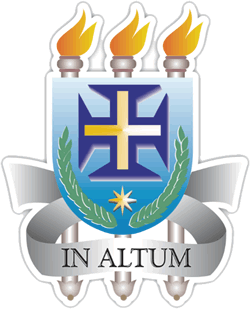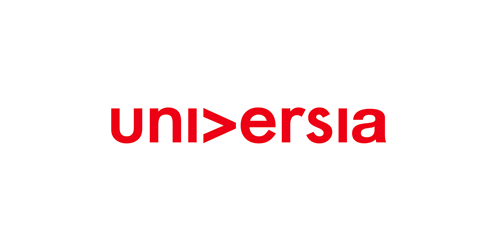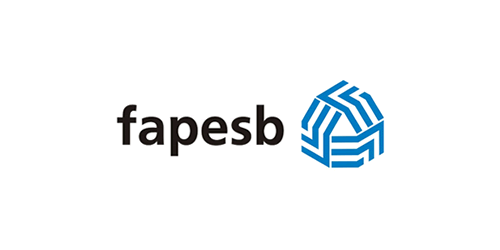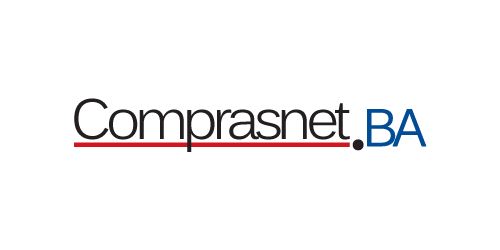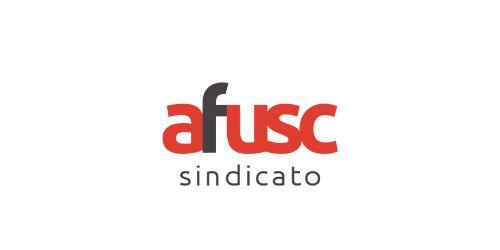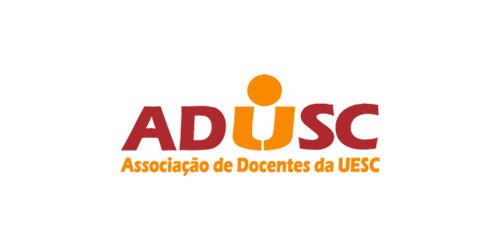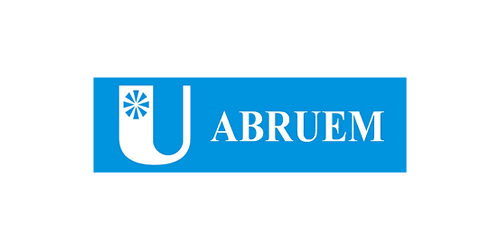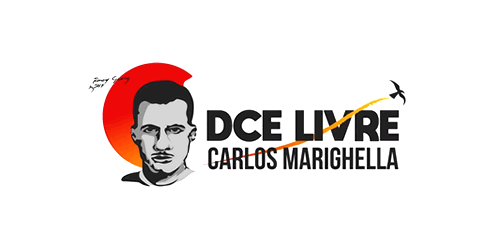PHYSICS GRADUATE PROGRAM AT UESC
Regulations
All the documents related with the administrative rules of the program are displayed here (in portuguese only; please contact us in the case you have some question).
- General Information
- Rules & Docs
- Disciplines
- Disciplines (this semester)
- Forms
Program Level:
Academic Master (equivalent to a Master of Science course)
Goals / Professional skills
The main goal of this program is to introduce the student in the scientific career, which in Brazil means i) to prepare them to teach Physics in Universities at undergraduate levels, ii) to produce their first scientific products (results and/or papers) in physics and in their correlated branches. In order to accomplish for that, a solid formation in classical and modern physics occurs in the first academic year, while the thesis development is, in general, left to the second year.
Requirements:
Minimum of 24 credits (which corresponds in general to 6 disciplines)
How to get in:
A call of opportunity is launched each semester. Please pay attention to our home page.
Places per selection:
It will depend on the number of available studentships. Normally we offer 10 places each semester.
Apply for and get into:
You should careful read the Call of Opportunity, which is published in our site and also at the UESC site, normally, twice a year. We obey to the University's general calendar, which means that the beginning and the end of a semester is defined by the University. Normally, we offer 10 places twice a year. Each researcher in our program is able to supervise (at the same time) four students: normally we do not achieve such a limit. To be admitted in the program the candidate must:
1) have an undergraduate diploma;
2) be approved in the admission exam.
We also take into account:
1) the candidate CV;
2) two recommendation letters (mandatory).
After completing the admission process, the candidate must enter in contact with our secretary, that will help him/her with the bureaucracy.
General Rules (for the University)
- UESC General Rules
- UESC General Rules - for graduate programs
- Procedures for foreign students (diploma revalidation process)
- Rules for the Teaching Stage (mandatory for CAPES supported students)
- Rules for the second language test (mandatory for all the enrolled students)
Physics graduate program internal rules
- CONSEPE Norm 72/2012 (obsolete)
- CONSEPE Norm 73/2010 (obsolete)
- Course approval - CONSEPE Norm 03/2009
- Enrollment of new teachers and researchers - PROFÍSICA Norm 01.2014
- Thesis Defense procedures - PROFÍSICA Norm 01.2017
Actual Rules and Norms (valid for students enrolled after the semester 2016.1)
- CONSEPE Norm 135/2015 (obsolete)
- CONSEPE Norm 47/2016 (valid)
Main disciplines:
Bibliography:
- J. D. Jackson. "Classical Electrodynamics", Third Edition. Wiley (1998)
- W. K. H. Panofski and M. Philips "Classical Electricity and Magnetism", Second Edition. Addison Wesley (2005)
- M. A. Heald, J. B. Marion. "Classical Electromagnetic Radiation", Third Edition. Brooks Cole (1994)
- L. D. Landau, E. M. Lifshitz. "The Classical Theory of Fields", Fourth Edition. Butterworths-Heinemann (1975)
Bibliography:
- R. K. Pathria. "Statistical Physics", Second Edition. Butterworth-Heinemann(1996)
- K. Huang. "Statistical Mechanics", Second Edition. Wiley(1987)
- L E Reichl. "Modern Course in Statistical Physics", University of Texas Press (1980)
Bibliography:
- J.J. Sakurai. "Modern Quantum Mechanics", Revised Edition. Addison-Wesley (1994)
- L.E. Ballentine "Quantum mechanics: a modern development", World Scientific Publishing Co.(2000)
- A. Messiah, "Quantum Mechanics", Vols. 1 e 2. Wiley (1966)
Complimentary disciplines:
Bibliography:
- Aller, L.H. Physics of Thermal Gaseous Nebulae (Physical Process in Gaseos Nebulae), Reidel Publishing Company, Dordrecht, 1984
- Dyson, J.E., & Williams, D.A., The Physics of the Interestellar Medium, Manchester University Press, Manchester, 1980
- Osterbrook, D.E., Astrophysics of Gaseous Nebulae and Active Galactic Nuclei
Bibliography:
- Binney, J., & Tremaine, S. Galactic Dynamics, Princeton University Press, 1987
- Padmanabahan, T. Theoretical Astrophysics, V. 3, Cambridge University Press, 2005
Bibliography:
- A. Bohr and B. Mottelson. Nuclear Structure, Vol. I e Vol. II
- J.M. Eisenberg and W. Greiner. Nuclear Models (vol. I, vol. II e vol. III J.
- V.G. Soloviev. Theory of Atomic Nuclei. Nuclear models
- R.C. Barrete and D.F. Jackson, Nuclear Size and Structure. (1977)
- J.M. Irvine, Nuclear Structure Theory, chapter 15. (1970)
Bibliography:
- Clayton, D., Principles of Stellar Evolution and Nucleosynthesis, New York, mcGraw-Hill, 1968
- Kippenhan, R., & Weigert, A. Stellar Structure and Evolution, Springer, 1994
Bibliography:
- Glenn F. Knoll. Radiation Detection and Measurement,3rd edition (1993).
- K. S. Krane, Introductory Nuclear Physics, (1988).
- W.R.Leo. Techniques for Nuclear and Particles Physics Experimet, (1994)
- R.R. Roy and B.P. Nigan, Nuclear Physics: Theory and Experiment
- Morgan, K.Z. and TURNER, J.E. Principles of Radiation Protection.
- R. C. Fernow, Introduction to Experimental Particle Physics, Cambridge
- Attix, F.H. and Roesch, W.C. Radiations Dosimetry.
Bibliography
- B. Schutz; Geometrical methods of mathematical physics, Cambridge University Press (1980)
- I.M. Gelfand e S.V.Fomin; Calculus of variations, Ed. Prentice (1963)
- P. M. Morse and H. Feshbach; Methods of theoretical physics, Vol. I e II, McGraw-Hill(1953)
Bibliography:
- Samuel S.M. Wong, Introductory Nuclear Physics.
- R.D Evans, The Atomic Nucleus.
- E. Segré, Nuclei and Particles.
- Keneth S. Krane, Introductory Nuclear Physics.
- H. Frauenfelder and E.M. Henley, Subatomic Physics, Prentice Hall, 1991.
- J.D. Walecka, Theoretical Nuclear and Subnuclear Physics, Oxford University Press, 1995.
Bibliography:
- Carmelli, M. Classical Fields: General Relativity and Gauge Theory, John Wiley & Sons, 1982
- D´inverno, R. Introducing Einstein´s relativity, Claredon Press, 1992
Bibliography:
- Glenn F. Knoll. Radiation Detection and Measurement.
- R. C. Fernow, Introduction to Experimental Particle Physics, Cambridge University Press, 1986.
- W.R. Leo, Techniques for Nuclear and Particles Physics Experimet, (1994)
- W. H. Scharf, Biomedical Particle accelerators, AIP Press, 1993;
- E. Wilson, An introduction to particle accelerators, (2001).
- Health Effetcs of Exposure to Low Level of Ionizing Radiation. V.Beir
Bibliography:
- D.H. Perkins, Introduction to High Energy Physics.
- D. J. Griffiths, Introduction to Elementary Particles, John Wiley & Sons, 1987.
- B. R. Martin e G. Shaw, Particle Physics, John Wiley & Sons, 1992.
- L. H. Ryder, Quantum Field Theory, 2a. edição, Cambridge, 1985.
Bibliography:
- H. Goldstein. "Classical Mechanics", Third Edition. Addison-Wesley (2001)
- E.C.G Sudarshan e N. Mukunda. "Classical Dynamics: a modern perspective", John Wiley & Sons (1974)
- V. I. Arnold. "Mathematical Methods of Classical Mechanics", Second Edition. Springer Verlag (1997)
- A. J. Lichtenberg e M.A. Liebermann. "Regular and Stocastic Motion". Springer Verlag (1982)
Bibliography:
- J.J. Sakurai. "Modern Quantum Mechanics", Revised Edition. Addison-Wesley (1994)
- J.M. Ziman "Elements of advanced quantum theory", Cambridge University Press (1969)
- A. Messiah, "Quantum Mechanics", Vols. 1 e 2. Wiley (1966)
- L.E. Ballentine "Quantum mechanics: a modern development", World Scientific Publishing Co (2000)
Bibliography
- Christian P. Robert and Casella, G. Monte Carlo Statistical Methods Springer-Verlag 1999
- Fishman, G.S., in Monte Carlo: Concepts, Algorithms and Applications
- Kincaid, David. Numerical analysis: mathematics of scientific computing, 1991.
- Kalos, M.H. and Whitlock, P.A., Monte Carlo Methods. New York: Wiley. 1986.
Carga Horária: 60
Créditos: 4.0
Ementa: Transferência radiativa; mecanismo de emissão e absorção de fótons; radiação de cargas em movimento; efeitos da relatividade restrita; Bremsstrahlung; radiação síncroton; radiação Compton inversa; efeitos de plasmas; estrutura atômica; transições radiativas; níveis moleculares; aplicações astrofísicas.
Bibliografia
- Ribicki, G., Lightman, A. Radiative Process in Astrophysics, New York, Willey, 1979
- Longair, M.S. High Energy Astrophysics, Cambridge University Press, 1992
Bibliography:
- A. G. Citenko, Nuclear Reaction Theory. Moscou (1983).
- P.E. Hodgson, Introduction to nuclear reactions
- P.E. Hodgson, Nuclear Reaction and Nuclear Structure. Clarendom Press (1971)
- G.R. Satchler, Direct Nuclear Reactions. Clarendom Press (1983)
- R.A. Broglia and A.A.G.E. Winther, Heavy Ion Reaction Frontiers in Physics, Part I and Part II (1986).
- Theory of Nuclear Reactions, Feshbach
- W. Gloecke, The Quantum Mechanical Few-Body Problem. Spring Verlag (1983)
Bibliography:
- Gardner, R.P. & ELY, Jr. R.L., "Radioisotope Measurement Applications in Engineering".
- M. Eisenberd. Enviromental Radiactivity.
- KRUGER, P. Principles of Activation Analysis.
- IAEA, 1983. Tracer Methods in Isotope Hydrology, TELDOC-291, IAEA, Viena.
- IAEA, TECDOC-1363, IAEA, Viena (2003).
Bibliography:
- A. Fazzio e K. Watari. "Introdução à teoria de grupos com aplicações em moléculas e sólidos", UFSM (1998)
- M. Tinkham. "Group Theory and Quantum Mechanics". Dover, (2003)
- M. Hamermesh. "Group Theory and its Application to Physical Problems". Dover (1989)
- M. Lax. "Symmetry Principles in Solid State and Molecular Physics". Dover (2001)
Bibliography:
- A. L. Fetter e J. D. Walecka, "Quantun Theory of Many-Particle Systems", McGraw-Hill (1971);
- A. A. Abrikosov, L. P. Gorkov e L. E. Dzyaloshinski, "Methods of Quantum Field Theory in Statistical Physics", Dover (1975);
- G.D. Mahan, "Many-Particle-Physics", Plenum (1990).
Bibliography:
- To be defined by the professor.
Bibliography:
- Scientifc papers (to be defined a posteriori)
Note: All disciplines but Advanced Topics II have a credit hours (CH) of 4, which has a CH = 2.
- Disciplines/schedulle for the semester 2017.1
- Disciplines/schedulle for the semester 2016.2
- Disciplines/schedulle for the semester 2016.1
- Defense requirement (must be filled and signed 30 days before the defense date)
- Annual report (template)
- (Foreign) Diploma recognition process (template)
- Travel From 1 (must be filled in advance for those who want to travel supported by the program/University)
- Travel Form 2 (must be filled after the completion of the travel mission)
